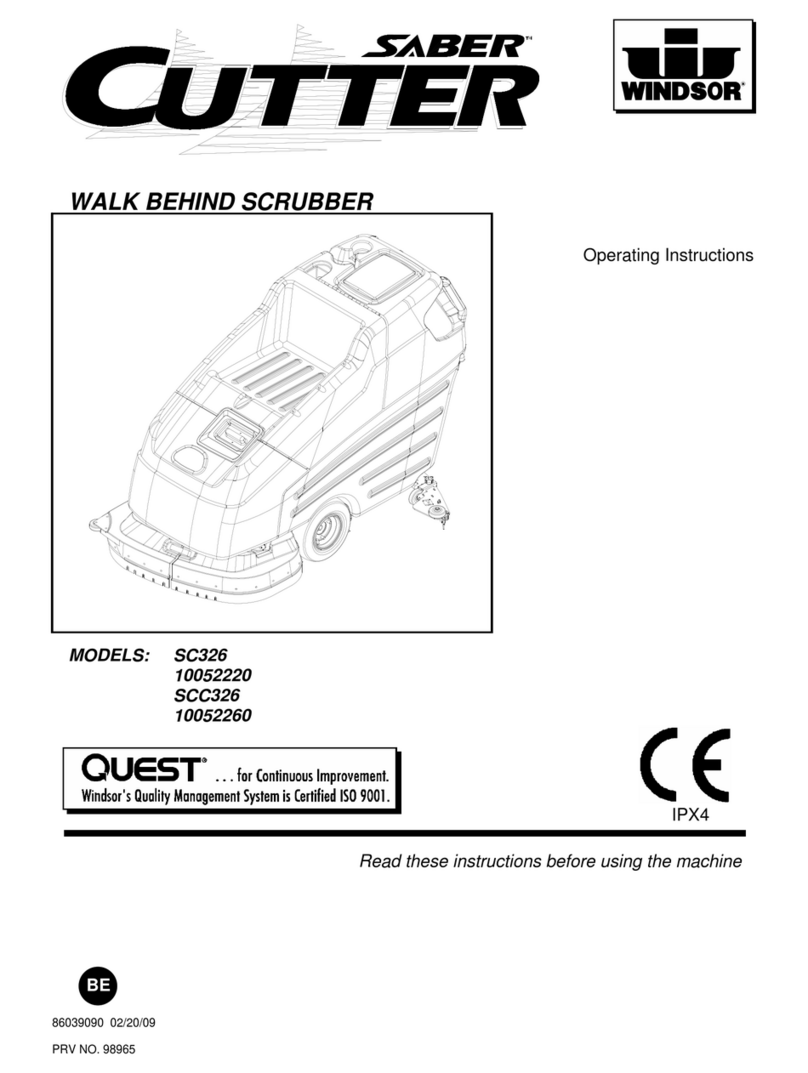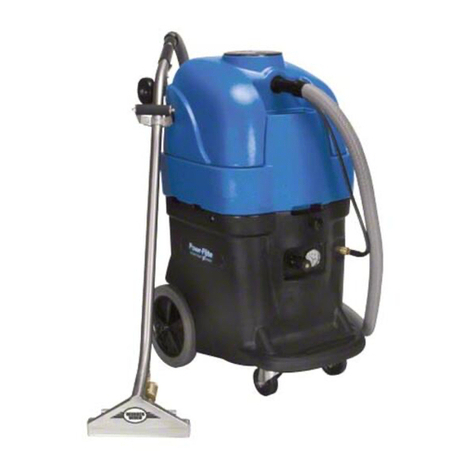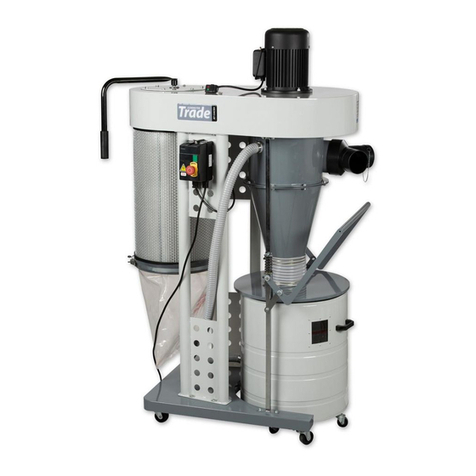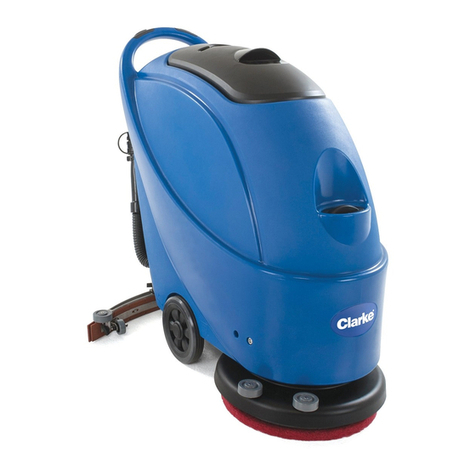
7
General Instruction for 230V Machines
Specific Safety for Dust Extractors
The following will enable you to observe good working
practices, keep yourself and fellow workers safe and maintain
your tools and equipment in good working order.
WARNING!! KEEP TOOLS AND EQUIPMENT
OUT OF REACH OF YOUNG CHILDREN
Mains Powered Tools
• Tools are supplied with an attached 13 Amp plug.
• Inspect the cable and plug to ensuree that neither are
damaged. Repair if necessary by a suitably qualified person.
• Do not use when or where it is liable to get wet.
Workplace
• Do not use 230V a.c. powered tools anywhere
within a site area that is flooded.
• Keep machine clean.
• Leave machine unplugged until work is about to commence.
• Always disconnect by pulling on the plug body and not the
cable.
•Carry out a final check e.g. check the cutting tool
is securely tightened in the machine and the correct
speed and function set.
•Ensure you are comfortable before you start work,
balanced, not reaching etc.
•Wear appropriate safety clothing, goggles, gloves,
masks etc.Wear ear defenders at all times.
•If you have long hair wear a hair net or helmet to prevent it
being caught up in the rotating parts of the machine.
•Consideration should be given to the removal of rings and
wristwatches.
•Consideration should also be given to non-slip footwear etc.
•If another person is to use the machine, ensure they are
suitably qualified to use it.
•Do not use the machine if you are tired or distracted
•Do not use this machine within the designated safety areas
of flammable liquid stores or in areas where there may be
volatile gases.
•Check cutters are correct type and size, are undamaged
and are kept clean and sharp, this will maintain their
operating performance and lessen the loading on the
machine.
•OBSERVE…. make sure you know what is happening
around you and USE YOUR COMMON SENSE.
KEEP WORK AREA AS UNCLUTTERED AS IS
PRACTICAL. UNDER NO CIRCUMSTANCES SHOULD
CHILDREN BE ALLOWED IN WORK AREAS.
Do not use this machine as a vacuum cleaner, try to keep the
waste medium to wood by products.
Do not uplift workshop floor debris (stones, nails, screws, paper
etc., etc). Be aware that wood dust is an explosive medium.
Do not allow any ‘naked light’ source to occur anywhere near
the machine.This includes cigarettes, matches, etc, and do not
place the machine near any unprotected light bulbs, that could
possibly get broken.
The suction force is generated by a high speed fan unit.This
has the potential to amputate fingers, grab loose clothing (ties
etc.,) and‘bat’ large chips etc, at high speeds. Keep all guarding
in place, and if access to the fan becomes necessary (due to
blockage etc.,) Disconnect the machine from the mains supply
and ensure the fan has come to a complete stop before putting
your hands anywhere near to it.
If you are not using ‘clear’ extraction hose, periodically remove
the hose to check that the inlet to the machine is not get-
ting restricted. (The safety guard grill of the inlet duct can be
particularly irksome in this way, as long strand shavings etc., can
wrap around the grill fret.)
Keep the particle filter clean.The machine relies on its ability
to ‘blow’ air through the filter, to generate good suction. If the
particle filter starts to clog, this reduces the air flow and hence
the machine becomes less efficient.
The particle filter can be cleaned, by using an ‘M’ class vacuum
cleaner, clean the inside of the filter.
Be aware that in dry air periods or areas, the movement of the
air through the machine can generate static electric fields.
These are not normally a problem as the machine is bonded
together via its construction and the whole is earthed back
through the electrical supply; problems can occur with isolated
items, such as stands or hosing that are insulated from the
ground (standing on rubber feet?, suspended in the air etc).
If possible, try to connect everything together electrically, to
eliminate static shocks.
(Use the integral metal coil in flexible plastic hosing to connect
units together).
Try to route the power cable and the hosing away from busy
walkways.
Do not allow the inlet to become ‘dead ended’, or block or
restrict the outlet, this puts undue strain on the motor and can
lead to overheating.
ONLY USE DUST EXTRACTION BAGS
WITH THIS MACHINE NOT DOMESTIC
WASTE BAGES!
DO NOT PLACE DUST EXTRACTION
BAGES OVER THE FILTER ASSEMBLY!






























